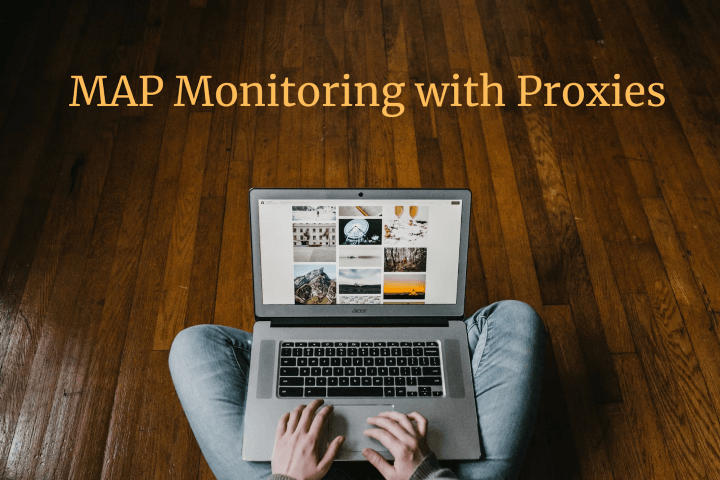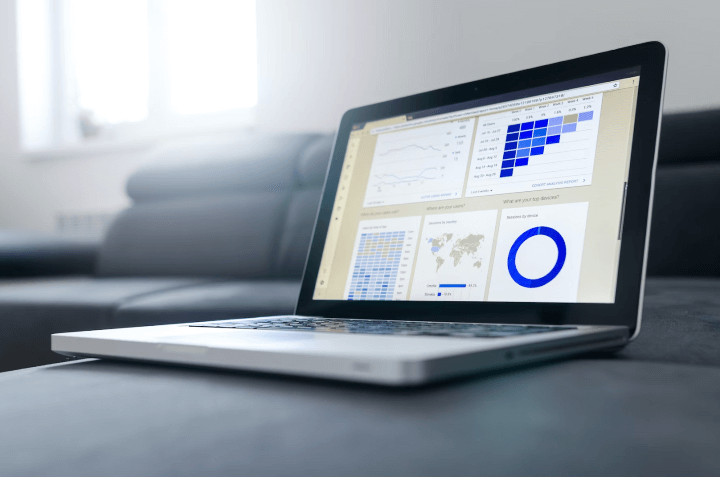Mastering MAP Monitoring with Proxies: A Guide for Manufacturers, Retailers, and Brands

Greetings, digital enthusiasts! In the bustling e-commerce marketplace, maintaining a brand’s reputation and value is akin to balancing on a tightrope. One misstep and it’s a long fall. Enter MAP (Minimum Advertised Price), the safety net that ensures your brand doesn’t take that tumble. Over my years of experience, I’ve witnessed firsthand how pivotal MAP is in keeping a brand’s image pristine.
You might wonder, “Okay, I see the significance of MAP, but where do proxies fit in this puzzle?” From my extensive testing and experience, I can tell you that proxies are the precision tools in the MAP monitoring toolkit. Think of them as high-powered binoculars that give you a clear view of the e-commerce landscape, allowing you to monitor product advertisements accurately, carefully, and efficiently.
Whether you’re a seasoned player in the e-commerce arena or just gearing up for the game, this guide is tailored for you. Together, we’ll navigate the intricacies of monitoring and harness the robust capabilities of proxies to safeguard your brand’s standing in the market.
What is MAP Monitoring?
In the bustling world of e-commerce, where every penny counts and every brand is vying for attention, there’s a silent guardian that ensures a level playing field: the Minimum Advertised Price, commonly known as MAP. But what exactly is it, and why should you care?
MAP is the lowest price at which a retailer can advertise a product for sale. Manufacturers set a policy to ensure their products maintain a specific perceived value in the market. Now, here’s a nuance I’ve observed over the years: while MAP dictates the advertised price, it doesn’t necessarily dictate the sale price. That means a retailer can sell a product below the MAP but can’t advertise it at that lower price.
The Difference Between Sale and Advertised Prices
It is where many get tripped up. The advertised price is what you see in ads, banners, or promotional materials. It’s the “face value” of the product. On the other hand, the sale price is what you might pay at the checkout. It can be lower than the MAP, but here’s the catch: retailers can’t shout about it. They can offer you a discount at the point of sale, but they can’t advertise that discounted price if it’s below the MAP.
Why is MAP Monitoring Essential for Brands?
Over the years, I’ve seen brands flourish and falter, and a significant differentiator has often been their approach to MAP monitoring. Let’s dive into why it’s such a game-changer.
Protecting Brand Value and Reputation
Every brand has a story, a unique value proposition that sets it apart. But what happens when that story gets muddled by inconsistent pricing? The brand’s image takes a hit. Through my extensive research and personal experience, I’ve found that consistent pricing is pivotal in maintaining a brand’s image in the eyes of consumers. It’s about preserving the narrative and ensuring that erratic pricing strategies maintain the brand’s value.
Preventing Brand Dilution
Imagine spending years building a brand only to see its value diminish because of rampant discounting by retailers. It’s a nightmare scenario, but one that’s all too common. Minimum Advertised Price monitoring is a safeguard, preventing the risk of product devaluation and ensuring that the brand’s essence remains untarnished.
Combatting Copycat Scam Artists
In my decade-long cybersecurity journey, I’ve encountered numerous copycat scam artists trying to piggyback a brand’s success. They undercut prices, sell counterfeit products, and tarnish the brand’s reputation. With effective MAP monitoring, brands can quickly identify culprits and take corrective action.
Maintaining Market Share
The e-commerce landscape is fiercely competitive. Brands are not just competing on product quality but also on price. By ensuring all authorized retailers adhere to the set MAP, brands can level the playing field. This strategy ensures fair competition and helps brands maintain (if not increase) their market share.
Securing Retailer-Manufacturer Relationships
Adhering to MAP policies can strengthen the relationship between retailers and manufacturers. Retailers who consistently respect MAP policies can potentially negotiate better terms, such as obtaining products at a lower price or receiving discounts on bulk purchases.
The Role of Proxies

Having spent a significant chunk of my career in cybersecurity, I’ve come to appreciate the sheer power and versatility of proxies, especially regarding monitoring. Let’s delve into their pivotal role.
✅ Anonymity and Avoiding Detection
First and foremost, proxies provide a cloak of anonymity. When you’re monitoring multiple retailers across various platforms, you don’t want to tip them off. I’ve tested numerous proxies; the best ones ensure you can gather data discreetly without raising any red flags.
✅ Accessing Geo-Restricted Content for Accurate Regional Data
Have you ever tried accessing a website and been denied access? That’s quite frustrating. Proxies are the key to bypassing these geo-restrictions. You can access localized content seamlessly by routing your requests through servers in different regions. It is invaluable for brands operating in multiple countries, ensuring they get accurate regional data on how their products are advertised.
✅ Making Frequent Requests Without Getting Blocked
In the world of monitoring, time is of the essence. You need to make frequent checks to ensure compliance. However, making rapid requests can lead to IP bans. Here’s where proxies shine. I’ve made frequent requests without getting blocked by rotating between different IP addresses. It’s like having multiple disguises at your disposal.
✅ Ensuring Data Accuracy
Accuracy is paramount. There’s no point in gathering data if it’s not accurate. Proxies ensure that the data you retrieve is genuine and not altered. For instance, some websites display different prices based on the visitor’s location. Proxy services allow you to see accurate, unaltered prices, ensuring your monitoring efforts are based on objective data.
Types of Proxies for Monitoring
I’ve had the privilege of testing and working with many proxy types. Indeed, each has unique strengths, and choosing the right one can make all the difference. So, let’s go through the best proxy choices for your MAP endeavors.
Residential Proxies
Imagine being a local in every city you visit. That’s the essence of a residential proxy. They provide IP addresses from real devices in real locations, making your online presence indistinguishable from a regular user. It is invaluable for monitoring, allowing you to access localized content and prices without raising suspicions.
Benefits:
- High anonymity: Blend seamlessly with regular internet traffic.
- Access to geo-restricted content: View prices and ads as a local would.
- Reduced chances of getting blocked: Retailers are less likely to block genuine residential IPs.
Static Residential Proxies
A blend of the best! Static residential proxies combine the authenticity of residential IPs with the consistency of data center proxies. You get a fixed IP address that originates from a real device.
Benefits:
- Stability: Consistent IP ensures uninterrupted monitoring.
- Authenticity: Real device origin guarantees high trust levels.
- Ideal for tasks requiring a consistent IP: Some platforms may flag changing IPs, making static residential proxies a safer bet.
Private/Dedicated Proxies
As the name suggests, these are proxies meant solely for you. Think of them as your private digital real estate. They offer a consistent IP address that isn’t shared with anyone else, ensuring optimal performance.
Benefits:
- Speed: Since you’re the only user, you get optimal bandwidth.
- Security: No risk of contamination from other users.
- Consistency: Ideal for tasks that require a fixed IP over extended periods.
In my experience, the choice of proxy often boils down to the specific requirements of the monitoring task. Need to access geo-restricted content? Choose residential proxies. Do you require a consistent IP for extended monitoring? Go for static residential or private proxies. Remember, it’s not just about gathering data; it’s about figuring accurate, timely, and actionable data. And the suitable service can be the difference between a successful monitoring strategy and a missed opportunity.
How to Automate MAP Monitoring with Proxies

In the digital age, where time is money and efficiency is king, automation is the secret sauce that spices up any strategy. And when it comes to monitoring, automation isn’t just a luxury; it’s a necessity.
Introduction to Web Scraping in the Context of MAP
Web scraping is the technique of extracting data from websites, and it plays a pivotal role in Minimum Advertised Price monitoring. Imagine it as a digital detective, meticulously gathering evidence (in this case, pricing data) from the vast expanse of the internet.
While the idea seems straightforward, the process can be intricate, especially when ensuring adherence to MAP policies across various online retailers. Automation tools, many of which I’ve had the pleasure of testing, simplify this task. They streamline the data extraction and ensure that the pricing information you gather aligns with the brand’s MAP guidelines, allowing for timely and accurate monitoring.
Setting Up Proxies for Automation
Proxies are the real heroes in the web scraping. But setting them up for automation requires some finesse. Here’s a quick rundown based on my experience.
- Understand Your Needs: If you’re making many requests, you’ll need a substantial pool of proxies to avoid bans.
- Choose the Right Type: Depending on your needs, you might opt for residential, static residential, or private proxies.
- Rotate IPs: To avoid detection and bans, ensure your automation tool rotates between IP addresses.
- Geo-specific Data: If you need regional data, ensure your proxy provider offers IPs from those specific regions.
- Concurrency and Throttling: Introduce delays between requests to avoid hitting the website too frequently.
- User-Agents: Along with IP rotation, change user-agents to mimic different devices and browsers. This tactic makes your requests appear more organic.
- Handle CAPTCHAs: Some websites might serve a CAPTCHA if they detect suspicious activity. Consider integrating CAPTCHA-solving services or avoid hitting such websites too aggressively.
Common Mistakes to Avoid
Ah, mistakes! We’ve all made them. While it’s true that every error is a learning opportunity, some can be costly and time-consuming. I’ve noted a few common pitfalls and am ready to share them.
⚠️Mistake 1: Not Rotating Proxies
Imagine wearing the same outfit to every party. Soon, people will recognize you from a mile away. Similarly, using the same proxy IP for all your requests is a rookie mistake. Retailers and websites have sophisticated systems to detect and block suspicious activities. By not rotating your proxies, you’re essentially waving a red flag, inviting them to block you. From my extensive testing, I’ve found that rotating proxies reduce the risk of detection and ensure uninterrupted data collection.
⚠️Mistake 2: Ignoring robots.txt Guidelines
The robots.txt file is like the rulebook of the web scraping world. It tells you which parts of a website you can access and which you can’t. Ignoring it is akin to trespassing. I’ve seen many enthusiastic brands dive headfirst into Minimum Advertised Price monitoring, only to get blocked because they overlooked this crucial file. Always check and respect the guidelines laid out in robots.txt. It’s not just ethical; it’s also essential for efficient and successful monitoring.
⚠️Mistake 3: Overwhelming Websites with Rapid Requests
Enthusiasm is great, but overzealousness can backfire. Bombarding a website with rapid requests is a surefire way to get blocked. It’s like trying to drink from a firehose – overwhelming and counterproductive. Pace your requests. Give websites breathing room. This approach ensures you don’t get blocked and the accuracy and consistency of the data you collect.
Legal Considerations in MAP Monitoring
Minimum Advertised Price is more than just a guideline; it’s a binding agreement between manufacturers and retailers. While it dictates the lowest price a product can be advertised for, it doesn’t control the sale price. This distinction is crucial. In the U.S., for instance, MAP policies are legal as long as they are designed unilaterally and not a result of a collusive agreement. However, the legal standing of MAP policies can vary from one jurisdiction to another. It’s always wise to consult with legal professionals familiar with antitrust laws in your region.
The Consequences of MAP Violations for Retailers
Retailers, listen up! Violating MAP policies isn’t just a slap on the wrist. Manufacturers can and often do take severe actions against non-compliant retailers. It can range from withholding product shipments to terminating business relationships altogether. In my experience, consistent MAP violations can tarnish a retailer’s reputation, making it harder to forge partnerships in the future.
Ethical Considerations in Web Scraping
While web scraping is a powerful tool for monitoring, it comes with its ethical considerations. Always respect the robots.txt file on websites, which lays out the dos and don’ts of scraping. Overloading a website with rapid requests isn’t just bad form; it can also lead to IP bans. Remember, the goal is to gather data ethically and efficiently, not to bulldoze your way through.
Final Thoughts
As we wrap up this comprehensive dive into MAP monitoring with proxies, I’d like to share some reflections from my years in the field. The digital landscape is ever-evolving, and so are our techniques and tools. Staying updated with MAP policies and monitoring techniques is not just a recommendation; it’s a necessity. I’ve seen brands flourish when they’re on top of their game, and others falter when they lag.
In the grand scheme of things, Minimum Advertised Price monitoring is a small piece of the e-commerce puzzle. But, as I’ve learned, it’s a piece that can make or break a brand’s success. So, arm yourself with knowledge, use the right tools, and always stay ahead. Here’s to mastering monitoring and ensuring your brand’s bright future in the digital marketplace!
